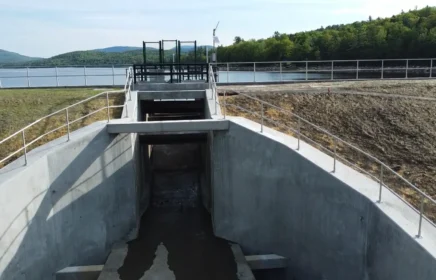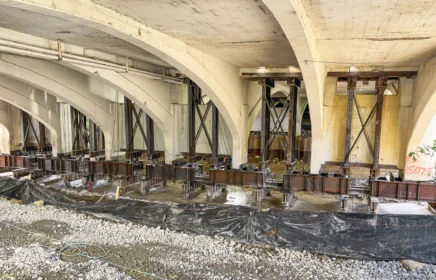Blue Lake Replacement
When an existing 2-mile section of pipeline in one of the nation’s largest landslide areas started to shift underground, Michels Pipeline, Inc. rebuilt the section with controls to predict and monitor future landslide impacts. At the same time, the crew upgraded the 26-inch natural gas pipeline’s pressure class to increase capacity to meet the needs of the area’s growing population.
Located in a densely wooded area with steep terrain in Washington’s Columbia River Gorge area, the project required the crew to take special precautions to avoid both personal injury and damage to equipment.
Working in an area with high landslide activity also required the crew to operate outside the norm of pipeline construction. For example, multiple engineered trench styles with varying levels of sand were used to protect the pipe from shifts and slope changes. In addition, a temperature- and pressure-monitoring cable sourced from Switzerland was installed on the pipeline to predict and record real-time strain, deflection and changes on the line when it is operational. The data will be recorded to predict landslide effects on the integrity of the pipeline. Fiber optic cables were installed at four spots on the pipeline; another cable was placed in the trench on top of the pipeline.
The team pivoted when challenged by international shipping delays and a few unexpected project findings, maintaining the ability to efficiently hit the customer’s adjusted outage dates, which was crucial for the success of the project because of the impact that outages have on pipeline customers.





